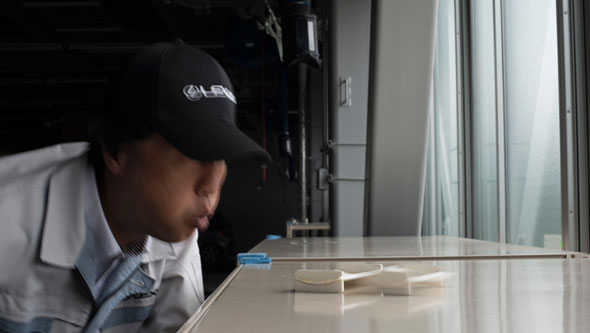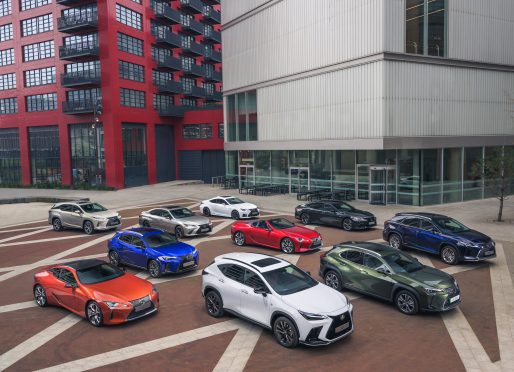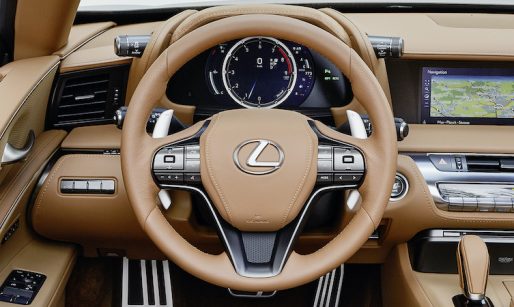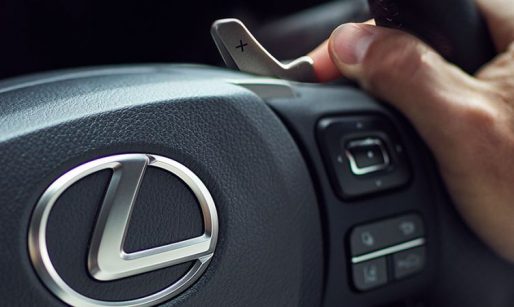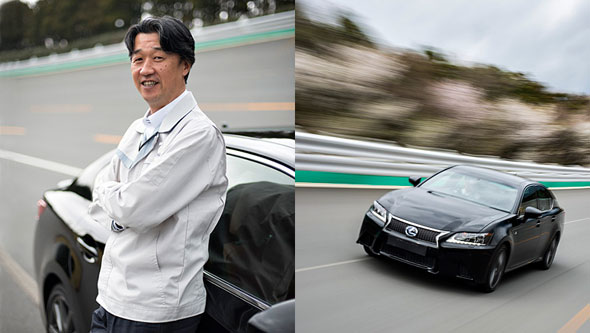
It’s the end of the day at the Lexus Higashi-Fuji track near Japan’s Mount Fuji. In the company of Koushi Yamada, Project Manager of the Lexus Aerodynamics Department (above), I’ve been marveling at the high-speed stability of the GS F Sport.
You’d expect a state-of-the-art sports saloon to feel secure at speed, but the big saloon feels so stable, it’s almost like it’s been nailed to Higashi-Fuji’s steep banking.
High speed laps over, I ask Yamada for the big secret. He smiles, and as the sun sets on our day, asks me how we got to the track. I point to our humdrum Japanese minivan – a functional sort of vehicle, but not exactly a sharp handler.

From his jacket pocket Yamada produces a handful of what look like garden slugs, except they’re made from a sticky, mouldable resin. He sticks a slug to each of the van’s rear indicators and door mirrors, takes a slow test drive around the car park, makes some final adjustments, then throws the keys back to me. “Try it now.”
The van hasn’t turned into a supercar, but the transformation is still eye-opening. It feels noticeably different, with more positive steering, even at low speeds. “When it comes to aerodynamics, improvements like these work from as little as 30km/h,” says Yamada.
It’s all down to the weird stuff we call air. For something invisible that you can’t touch, air is surprisingly heavy. Passenger airliners shove around a thousand tons of it aside every second they’re in flight. Cars have to push their way through it too, casting air as the ‘bad guy’ in the relelntless search for automotive efficiency.
Now, Yamada is using air as a force for good. Back in his workshop, a miniature polystyrene rendition of a car’s floorpan sits on a metal workbench. It’s practically weightless, so when Yamada invites me to stoop down and blow it off the bench, I’m feeling confident.
I start to blow. Oddly, the chunk of polystyrene refuses to budge. I blow harder. It makes no difference. Soon I’m feeling a bit giddy from all the blowing. Helpfully, one of Yamada’s assistants offers me a compressed air gun. I give the mini-floorpan a full-power blast. Annoyingly, it remains magically bonded to the bench. I’m suspecting foul play and the use of hidden adhesives, but Yamada disproves that unworthy thought by flicking the piece away with one finger.
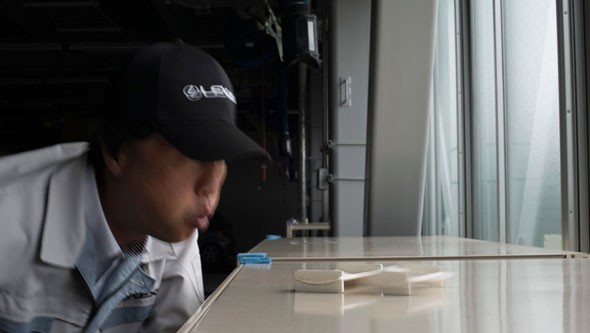
Now he invites me to blow on a second mini-chassis, identical to the first one apart from a thin piece of wire taped across its otherwise smooth underbelly. I’ve barely started breathing on it before it takes off and flutters to the ground.
We’ve just witnessed Bernoulli’s principle, a law of aerodynamics that will anchor a flat thing to the ground just as surely as a 600-ton hydraulic press. Forty years ago, ‘ground effect’ cars were banned by Formula 1 authorities for being too dominant, but there’s nothing preventing the exploitation of this remarkable phenomenon in road cars.
Attached to indicator and door mirror assemblies, Yamada’s ‘slugs’ – let’s call them fins – create a kind of whirlwind energy to wrap flowing air more tightly along the sides of a Lexus and make the car even more stable.
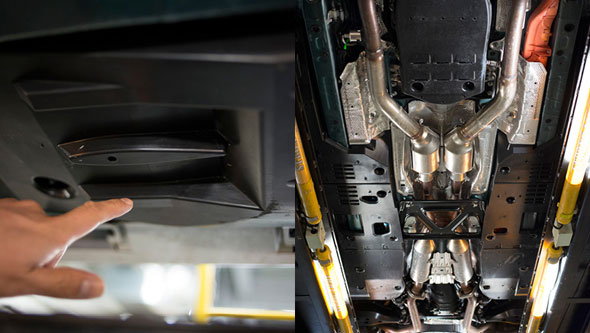
The modifications to the underside of the development GS that we’re looking at in Yamada’s workshop are even more subtle, but the results are amazing. Moulded plates with different fin setups streamline the airflow under the car, boosting grip and reducing wind noise. “The underside of the car offers the biggest potential for aero improvement, because it’s such a large area,” says Yamada. “But the final setup is always a balance between the underfloor package and the visible fins.”

Our track GS F Sport is one of the first production Lexus cars to get the Yamada treatment. Fin packages are bespoke for different cars, so the GS F Sport gets rear indicator fins but not the door mirror fins that will feature on the new LS. The regular latest-generation GS has its own package: so does the CT200h, the latest RX, and the new Toyota Auris.
Yamada says that his inspirations come from the sensations in his fingertips. Thanks to his pocketful of tiny fins, Lexus owners can now enjoy that special ‘Yamada feeling’ for themselves.
